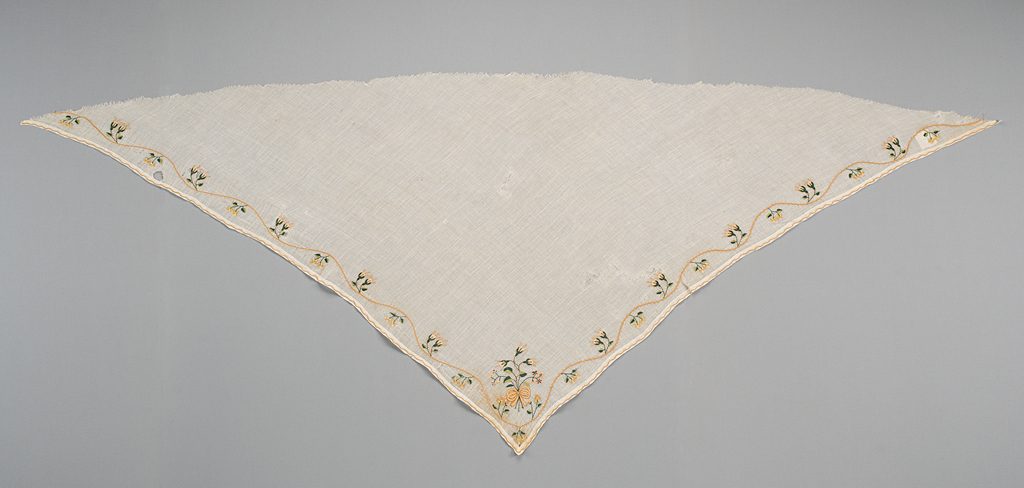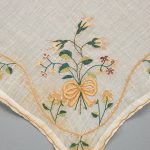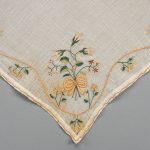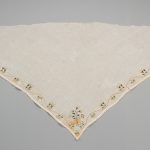
Culture: Indian (possibly)
Title: Fragment
Date Made: 1790-1805
Type: Clothing
Materials: Textile: polychrome silk embroidery (tambour or chain stitch); white plain weave, sheer cotton (mull)
Credit Line: Gift from Mrs. Fred Thompson (nee Julia Acheson)
Accession Number: T.093
Collection: Historic Deerfield
This fragment features polychrome silk embroidery on a very fine cotton muslin (mull) ground. The embroidery consists of a floral design, with the largest motif as a small bouquet of flowers tied with a bow. Most of the flowers are generic, but the three at the top of the bouquet resemble hyacinths. It is believed to have been part of the hem to a robe, gown, or skirt. It was originally accessioned as a fichu, likely because of its triangular shape (see this ensemble at the Metropolitan Museum of Art for an example of an 18th century fichu). Rather, it is likely a section of embroidery removed from a gown hem, according to Ned Lazaro, Collections Manager and Associate Curator of Textiles at Historic Deerfield.
It came to Historic Deerfield in 1976 as part of a large donation from Mrs. Fred Thompson (nee Julia Acheson, 1916-2000) of New York City. Julia Acheson was born in Raymond, Washington, the daughter of Barclay and Louise Acheson, and the niece of Lila and DeWitt Wallace who founded Reader’s Digest. Her husband, Fred Thompson, had served as vice president of the New York Times. All of the items of clothing and textiles, over 200 of them, that came with the gift had descended in her family, according to the donor. Historic Deerfield was happy to acquire this gift, as the objects increased the museum’s holdings in the areas of clothing and textiles.
Much like another fragment in the collections of Historic Deerfield, the garment to which this fragment once belonged was likely made between 1790 and 1805. It was made in India or France (here is an example of an 18th-century French embroidered skirt – note the bouquets). It was torn or cut from the original garment. The fragment occupies an ambiguous space between the East and the West, which encourages us to ask: what cultural, political, and economic contexts created the space for objects like this to be produced, collected by woman in New England, and deposited in the Historic Deerfield collections?
Collections Database: HD T.093


